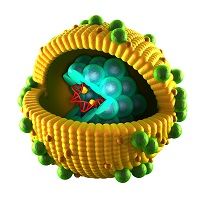Article
Hepatitis C Challenges and Successes in the Era of Interferon-Free Treatment
Author(s):
Today, there are multiple combinations of interferon-free treatments that have efficacy rates of 90% or higher and are better tolerated with fewer severe side effects than previous interferon-based therapies.

Medical science has made great strides in the treatment and understanding of hepatitis C since the discovery of the virus in 1989, but many challenges still exist when it comes to treating the virus that remains a worldwide concern, according to Rockefeller University Professor Charles Rice, PhD, Maurice R. and Corinne P. Greenberg Professor in Virology, Laboratory of Virology and Infectious Disease, Rockefeller University. Rice is also scientific and executive director of the Center for the Study of Hepatitis C, an interdisciplinary center established jointly by The Rockefeller University, NewYork-Presbyterian Hospital and Weill Cornell Medical College.
A featured speaker at the 2015 Conference on Retroviruses and Opportunistic Infections held in Seattle, WA, Rice gave a lecture that highlighted key moments in the history of hepatitis C research and spoke about how treatment has evolved over the years. He also discussed recent successes in drug development and what to expect in the future.
There are an estimated 170 million people worldwide infected with hepatitis C virus, noted Rice. Yet an estimated 50% of those infected don’t know they have the virus. A key problem of the virus is that it causes slow progressive inflammation in the liver that can lead to cirrhosis and liver cancer.
“I think one of the areas of interests in this crowd is that about a third of HIV-infected people are also infected with hepatitis C, and in the coinfected people, this disease progression -- this relatively slow progression -- actually is much faster” in ways that are still not yet understood, Rice said.
Once the hepatitis C virus was identified in 1989, the main goals of research in the field were to “clean up blood supplies” to stop further spread of the disease, identify those infected, and improve the rate of successful treatment.
There is no vaccine for hepatitis C and the need for one remains a source of debate, Rice said. Over the past 25 years, the disease focus has centered on treatment. For decades, disease management involved the use of interferon-based treatments that in the early years produced low success rates. Eventually, treatment evolved from a success rate of about 5% in the 1980s to a 55% rate of elimination of the virus by 2011.
Rice noted that in the last year, doctors and researchers marked a new era in the treatment of hepatitis C with the development and approval of drugs identified as direct-acting antivirals.
“The evidence that we have to date is that by and large successful treatment really does represent a virologic cure,” Rice said. That means that patients who achieve a sustained virologic response rate (SVR) very rarely experience a resurgence of the virus. The old criteria for a cure used to be when a patient tested negative for 6 months following successful treatment, but now 3 months seems to be just as good a time frame to predict a cure, Rice said.
“Most importantly, if you get rid of the virus, it does lower your risk of liver disease,” he said.
The take-home lesson is that today there are multiple combinations of interferon-free treatments that have efficacy rates of 90% or higher and are better tolerated with fewer severe side effects than previous interferon-based therapies, Rice told the crowd. These new therapies are also showing good SVR rates in the populations coinfected with HIV, he said.
Still, challenges remain, including improving ways to identify more people who are infected with the hepatitis C virus and addressing the high cost of drugs to treat them, Rice said.
“We shouldn’t get complacent with all these successes because you never really know what’s coming next,” Rice said.




